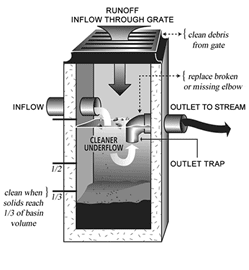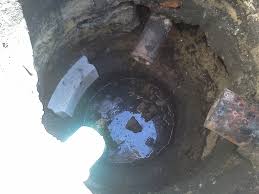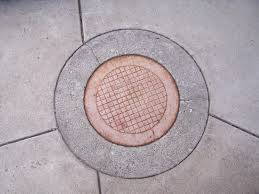All About Catch Basins
Nobody wants water to pool around their home’s foundation. We’re sure you don’t want this either, and why wouldn’t you? The pooling water around your foundation can result in wood rot, seepage, mold, moss growth, insect activity, and long-term damage.
So, how can you ensure none of this happens, and runoff pooling doesn’t become an issue for your home? The answer is simple: install a catch basin drainage system. These systems work best for moving roof water runoff somewhere far from your home, preventing you from the headache and your house from the issues.
Did you know that according to a recent survey, cities with populations over 100,000 collectively have around 900,000 catch basins? These numbers are enough to emphasize the importance of a well-maintained catch basin to keep communities safe and functional. In fact, not only this, but it also helps in protecting the environment from pollutants carried by storm water.
In this blog, we will cover almost everything about catch basins in detail, helping you get the most accurate idea about this preventative measure.
So, without further ado, let’s start.
What Is A Catch Basin?
A home built before 1960 and located in the urban areas of the larger cities is likely to have a cast iron lid on a large masonry basin. This basin is called a catch basin. There are many reasons for these large structures, but the most common purpose of a catch basin is to separate the various contaminants in the residential sewer system.
The Purpose of Catch Basins
Catch basins, also known as storm drains, surface water drains, or stormwater drains, are essential components of drainage systems. These structures are designed to collect and filter stormwater runoff from paved surfaces, such as roads, parking lots, and residential properties. By doing so, they help prevent flooding and reduce the amount of debris and pollutants entering local waterways.
The Connection Between Sewer Systems and Catch Basins
Before we talk about catch basins, we need to talk about the sewer system. Most older systems in older communities have a single pipe system. This system has both the sanitary and the storm sewers going through the same pipes to the same discharge locations. Modern communities and designs use a two-pipe system, where the stormwater is in one pipe and the sanitary sewer in another. The stormwater would discharge to an appropriate location like a river or a lake, while the sanitary sewer terminates in some form of sewage treatment facility.
Catch basins in sewer play a crucial role in stormwater management. They are designed to collect rainwater and prevent flooding by redirecting the water into storm drains, which then lead to treatment facilities or natural discharge points like rivers and lakes.
Catch Basins in Older vs. Modern Sewer Systems
Older treatment facilities did not have the capacity or design ability to fully treat some of the grease, lye, and phosphates created from residential waste. Modern treatment facilities have the ability to treat these elements. In order to protect the system, a trap or catch basin is added to residential properties.
Where Are Catch Basins Found?
Additionally, catch basins can be found in commercial areas and urban environments. Their grates, often visible at the ground level, collect runoff water and debris, preventing clogs in the sewer system and reducing erosion. In some cities, these grates are even designed with artistic or decorative patterns, adding an aesthetic element to an otherwise functional piece of infrastructure.
Why Is Catch Basin Maintenance Important?
Proper maintenance of catch basins is crucial to their performance. Over time, debris and sediment can accumulate, leading to blockages and localized flooding. Regular cleaning helps ensure that water flows freely, protecting both properties and surrounding ecosystems.
Do Houses Need a Catch Basin?
A catch basin is no longer a necessity in modern homes. The older catch basin system can be taken out of use and replaced with modern drainage solution. It is a matter of reconfiguring the drains in the home and possibly adding an ejector system.
When a system is taken offline they are typically permanently sealed. This would include filling the basin with an appropriate material. This could include sand, stone, gravel, or a combination of all of them. If you need help with other home care issues, be sure to check out our seasonal home maintenance checklist!
How is a Catch Basin Designed?
A catch basin is typically crafted from masonry. This masonry could be brick, concrete block, or concrete rings. It is constructed deep enough to be a few feet lower than the bottom of the sewer system in the street. There are at least two pipes installed through the walls of the basin. One pipe is the inlet pipe from the home, and the other is the outlet pipe toward the sewer. There may be other pipes as well. These could be the downspouts from the gutters or yard drains.
The idea is that the laundry, floor drains, and kitchen sinks are the most likely origin of the contaminated water. The toilets and bathrooms would
If the water levels are allowed to become unbalanced or too high, the system will not work properly. This is typically because the scum layer is too high. There is an older term called a “muck bucket.” This is a small shovel or bucket on a pole.
It was used to help clean out the scum or other debris accumulated at the bottom of the basin. Modern repair would involve having a sanitary vacuum truck clean out the system.
Because this system is installed in the laundry and the kitchen, there is a strong opportunity for odors. Laundry and kitchen water is extremely malodorous. The installation of a garbage disposal is not encouraged. The organic materials will decay and provide a bad smell in the system.
How Does Catch Basin Work?

This system helps prevent blockages, minimize flooding, and ensure excess water is safely diverted to storm sewers,
Catch basins are widely used in residential, commercial, and public settings. In homes, they help manage yard and driveway runoff, protecting against basement flooding. In urban and commercial areas, they prevent water pooling in streets, parking lots, and sidewalks while reducing property damage risks. Additionally, catch basins contribute to erosion control and improve water quality by filtering out debris and pollutants before they reach natural waterways.
How is a Catch Basin Inspected?
The inspection of the system should begin with observations of the exterior elements. You have to verify the lid is safe and intact. Any cracks or damage to the lid can be potentially dangerous. There are two different types of lids.
One is suitable for a driveway and strong enough to support a vehicle’s weight, while the other is only for the yard or sidewalk. The driveway lid will be considerably thicker and stronger.
The second element of the inspection is to review and look around the line and the concrete ring. This should be without any cracks or displacement. It should also be without any voids. Cracks in the ring can lead to lid failures. Voids or sinkholes around the lid can indicate sidewall failure and erosions.
The interior of the catch basin should be reviewed. Attempt to identify any visible structural deficiencies to the sidewalls, such as visible distortions to the wall. The basin was constructed in a reasonably cylindrical manner. Any deviations to the cylinder should be noted. Next, the water level should be reviewed. The inlet pipe (from the home) needs to be higher than the water level.
An inspector should have the ability to determine if the catch basin is still an active part of the sewer system or has been removed from the system and is now vacated. There is a very easy way to determine this: turn on the water in the kitchen and laundry sinks. This water should be visibly discharged into the catch basin. If the water is not draining into the catch basin, it is most likely vacated. Make sure to operate the system long enough to verify the system.
If the water level is higher than the inlet pipe, there is a strong possibility of backup or slow drains in the home. The outlet pipe should be partially submerged in the water, and the return should be underwater.
Why Do You Need A Catch Basin?
A catch basin is needed for managing water runoff and protecting your property from potential damage caused by drainage issues. You might need a catch basin if you notice the following:
- Frequent flooding in your yard
- Water pooling in low-lying areas
- Slow-draining surfaces after rainfall
These issues can lead to foundation damage, soil erosion, and even basement flooding, making a catch basin a practical solution to channel excess water away. The number of catch basins required for your property depends on factors such as:
- Size
- Slope
- Water flow
For instance, if you own a larger property or one with extensive paved surfaces, then multiple catch basins might be required to handle the water volume effectively. Similarly, properties with varying elevations or located in areas with heavy rainfall may need additional basins to prevent overloading the system. By installing a properly designed catch basin system, you can protect your property from costly water damage and maintain a safe, functional environment.
What’s the Difference Between a Catch Basin and a French Drain?
Most of the time, people get confused between a catch basin and a French drain. Yes, both of them are important drainage systems used to manage water runoff. However, they differ in design and function, which makes them well-suited for different purposes.
A catch basin is a surface-level drainage system typically found in areas like parking lots, roadways, or around properties prone to surface water accumulation. It consists of a rectangular or circular basin with a grate on top to prevent debris from entering. Also, it collects rainwater or runoff before directing it into a drainage pipe or stormwater system. The primary function of a catch basin is to capture water and direct it away, preventing flooding in high-traffic areas or properties. These are usually installed in areas where water collects on the surface and needs to be quickly funneled into the drainage system.
On the other hand, a French drain is a more underground solution, commonly used around foundations, retaining walls, or landscapes that experience water pooling underground. It consists of a trench filled with gravel or rocks, with a perforated pipe running through the middle, designed to redirect water away from the area. The trench is typically lined with a fabric to prevent soil and debris from clogging the system. French drains are particularly effective in areas where water tends to collect below the surface, such as around a building’s foundation, offering an efficient way to divert groundwater.
In short, while catch basins are ideal for surface water management in high-traffic areas, French drains are used for managing underground water flow, particularly in residential landscaping or around building foundations.
How to Install Your Catch Basins?
Installing a catch basin is rather simple. But you, of course, need to ensure careful planning and proper execution for effective water management. For this, you can start by identifying areas of your property where water might accumulate. Examples of such areas could be low-lying or frequently flooded zones. You must install the catch basin in these areas to collect water runoff and direct it into the drainage system.
Follow the following steps to install a catch basin:
- Choose the Location: Find the ideal location in areas that experience water pooling. Later, you need to consider land slop and the flow path to ensure efficient water collection.
- Prepare the Site: Dig a trench to place a catch basin and make pipe connections. Here, you need to make sure the trench is slightly sloped to allow water to flow toward the basin naturally.
- Set the Basin in Place: Once the site is prepared, position the catch basin in place. You need to make sure that it is leveled and aligned with the drainage flow. While doing so, attach the outlet pipes to the basin and connect them to your drainage system.
- Backfill and Secure the Basin: You need to cover the basin with gravel or soil. While doing so, ensure the surface is compacted around it. Along with this, the grate should be flush with the surrounding surface. This helps in avoiding tripping hazards while ensuring water flows correctly.
- Test the System: Now that the system is installed, run water through the system to check for proper drainage and flow. If there’s a need then adjust the system while ensuring water is directed away from the property without pooling.
What Are the Advantages of a Catch Basin?
Let’s have a look at some of the major advantages of catch basins:
-
Prevents Flooding and Water Accumulation
Catch basins play an important role in managing rainwater and runoff by directing the excess water away from driveways, streets, and yards. Also, by capturing and diverting water to the sewer system, they also help prevent water accumulation, reducing the risk of flooding, especially during heavy rainfall.
-
Reduces Contaminants in Water Systems
You can consider catch basins as the first line of defense for water quality. They help in trapping debris, sediments, and pollutants before the contaminants enter the local water bodies or main sewer systems. With this filtering, it gets easier for you to protect natural waterways from pollution. In fact, it makes catch basins a great infrastructure element that benefits your home environmentally.
-
Minimizes Erosion and Structural Damage
By controlling the flow and direction of stormwater, catch basins help prevent soil erosion around foundations, sidewalks, and other structures. Properly managed drainage reduces the wear and tear on surrounding infrastructure, extending the life of streets, curbs, and adjacent property features.
What Are the Disadvantages of a Catch Basin?
Following are some of the disadvantages of catch basins:
Regular Maintenance is Required
Catch basins require frequent cleaning to prevent clogs caused by accumulated debris, sediment, and scum. Without regular maintenance, these systems can back up, leading to flooding, foul odors, and potential blockages that can damage the sewer infrastructure.
Can Attract Pests and Produce Odors
Since catch basins trap organic material, food waste, and other debris, they can become a breeding ground for pests like insects and rodents. Additionally, decaying organic matter within the basin can produce unpleasant odors, especially if left unmaintained, causing discomfort for nearby residents.
Potential for Erosion and Structural Issues
If a catch basin is improperly installed or damaged, it can lead to soil erosion and structural issues around it. Cracks in the basin walls or rings can cause water to seep into surrounding areas, leading to sinkholes, voids, or even damage to nearby foundations and sidewalks over time.
Conclusion
Catch basins serve as an effective solution for managing water runoff and protecting properties from water damage, flooding, and erosion. They also play an important role in filtering out contaminants, contributing to cleaner local water systems and helping preserve nearby natural environments.
However, like any infrastructure, they require regular maintenance to function effectively and to avoid issues like blockages, odors, and pest infestations. If maintained properly, a catch basin can offer lasting protection and peace of mind for homeowners, keeping both properties and surrounding communities safe from the impact of excess water and pollutants.
Investing in a catch basin system is a smart choice for long-term property protection, and with regular upkeep, it will continue to support a cleaner, safer environment for everyone.
If you want to ensure your property is well-protected from water damage and runoff issues, talk to our experts at The BrickKicker! Our team is here to help you with everything from installing to inspecting and maintaining catch basins. Reach out today, and let us help you safeguard your home or business with confidence.